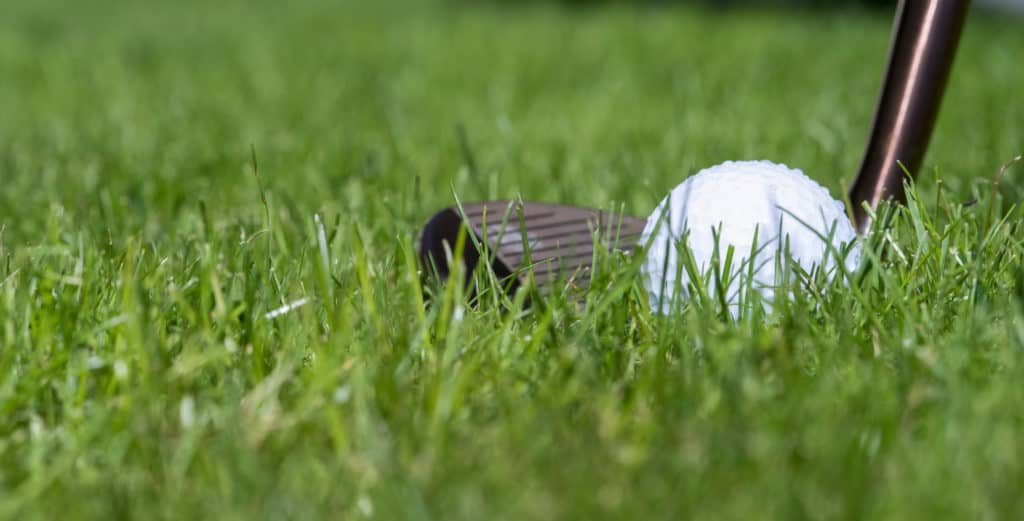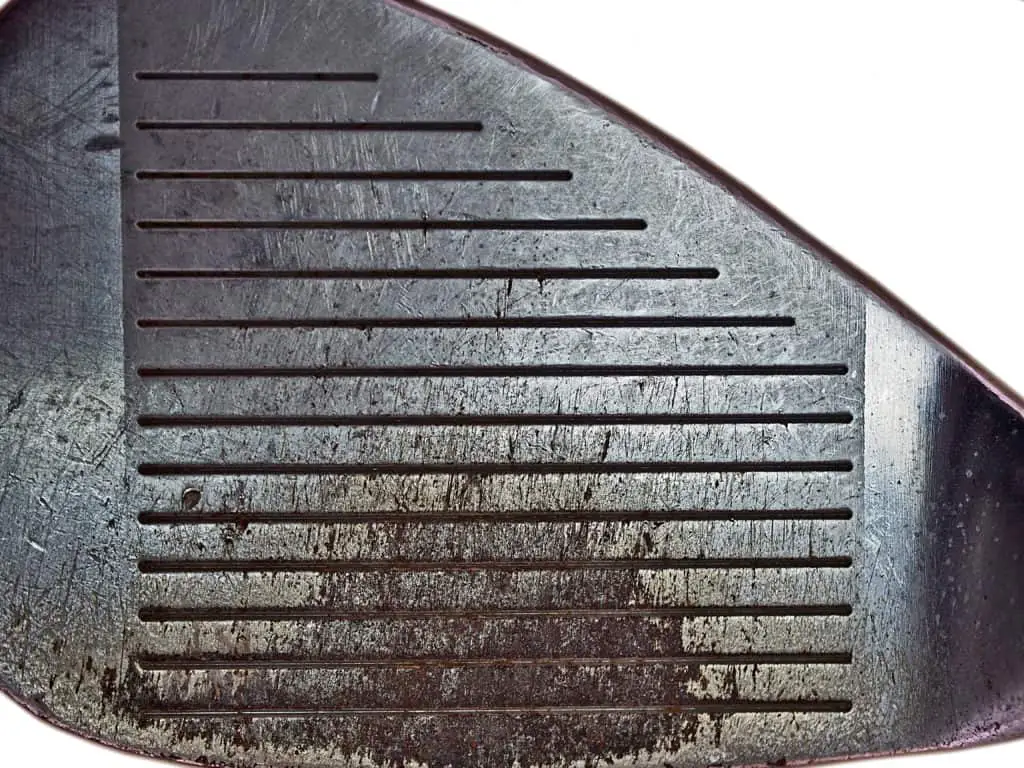DId you know that 60% of shots in golf take place inside of 100 yards?
Many golfers, especially those not hitting a lot of greens, end up chipping the ball on a high percentage of the golf holes.
Generally speaking, the golfer must be able to get the ball somewhere inside of 10 feet. The beginner golfer might be content just to get the ball on the green, while the more advanced, single digit handicap golfer is expecting to chip the ball inside a 3-6 foot circle.
Recently, speed in the golf swing has been discussed in great depth. While speed is a way to overall improvement, the fastest way to get better at golf and lower your scores is to chip the ball closer to the hole.
Even if you are someone that only hits 6 out 18 greens in regulation, being able to save par on 6 of the 12 greens not hit in regulation can keep your score in the mid to upper 70s. You would have 12 pars and 6 bogeys if you keep the ball in play.
If you are someone looking to take your game to the next level and become a single digit handicap golfer or the beginner just trying to hit the ball on the green and not embarrass yourself, the 5 tips below could get you to the next level.
At the end of the day, like with anything in golf, time must be spent practicing chipping and the short game and the time is well worth it! The great news is that strength, speed and power are not needed to be a great short game player. Instead, average technique with a quality amount of practice can get you to the elite level in chipping!

Tips For Chipping: Top 5
- Pick Your Technique
- Create A System For Distance Control
- Read Your Lie
- Remove the Tension
- Keep It Simple
Tips For Chipping
#1: Pick Your Technique
For years, the conventional teaching was to keep your hands ahead of the ball. At address, the golfer would forward press their hands and often setup with their hands by their front leg. From there the golfer would swing the club back and through while keep the hands ahead of the club head.
Recently, more and more professional golfers and the key instructors in the golfing world are promoting the use of the bounce in the chipping technique. Each club has a certain amount of bounce, which helps is cut through the ground and not bury into the ground if the ground is struck. The best golfers sometimes will even hit slightly behind it, but will use the bounce to ensure they don’t dub their chip and have the divot fly further than the ball.
So, every golfer must decide what technique is best for them. Phil Mickelson promotes the first technique which is where the golfer ultimately uses the leading edge and moves the ball around in the stance depending on the height of the desired shot.
The second technique, that we will refer to as using the bounce, is promoted and taught by many of the top instructors in the golfing world.
Leading Edge vs Using the Bounce
I would recommend that most golfers use the bounce, unless you are someone that has successfully used the leading edge for many years. When a golfer lands short of a green and is fairway length grass, using the bounce provides a larger margin of error and actually allows the golfer to hit slightly behind the ball and not have a massive negative impact.
The utilization of the bounce will help in pressure situation and over the course of the different levels of tension and pressure throughout a round of golf, the safest and most consistent approach will be found with this technique.
Resource: How to use the bounce
Tip #2: Create A System For Distance Control
Now that you have selected your technique, the next step is to pick your system to control your distance. Some will play completely by fill, while others will use a clock like system to control the length of the swing, the club used and then decide on the speed of the swing.
There are three variables that impact the distance a ball will travel when chipping:
- The loft of the club
- The length of the swing
- The speed of the swing
The shot that has the least amount of loft, with the longest, fastest swing will travel the furthest.
The slowest swing, that is the shortest with the most amount of loft will travel the shortest.
Recommended System
After determining the landing spot of the shot and determining how the shot will roll out, the golfer should decide on three different options.
The golfer will first decide on the club to use, the length of the swing, and the speed. The golfer should take into consideration the lie and how they are feeling at the time.
- The golfer can pick anywhere from a 6 iron to a lob wedge.
- The next step is to determine the length, 7:00, 8:00 and 9:00 (shortest to longest)
- The speed of the swing (slow, medium, and fast)
The clock system assumes the club is pointed at 6:00 at address. For the shortest swing, the golfer would take the club to 7:00, medium length would be 8:00 and the longest swing would be 9:00. 12:00 is by your head, and 6:00 is by your feet.
The speed of the swing is slow, medium and fast. This is pretty self explanatory, but the golfer should stay smooth with whatever speed is selected.
For example if the golfer has a chip shot of 30 feet. The golfer might select the sand wedge, an 8:00 swing at a medium speed. Or the golfer might go with a 9 iron, a 7:00 swing, with a fast swing and keep it nice and simple. The golfer has options and should practice the different options to determine what is best in each situation faced on a course.
Resource: More in depth about distance control

Tip #3: Read Your Lie
This might be the most important part of the chip shot. Understanding how the ball and club will react to the different lies that you face on a golf course. The easiest shots are often when the ball is sitting up in the rough. This provides a little extra cushion under the ball and the golfer does have to fear the bladed or chunked shot.
The most difficult lie is often the one where there is very little grass the and the ground is a bit soft, creating an uncertainty with the shot.
Also, many golfers struggle out of tight fairways.
When faced with the most difficult lies, our advice is to keep it simple. Go with a more putting like motion where the goal is to make solid contact. Don’t try to get fancy and hit a flop shot off of the bare lie.
Out of the tightly mowed fairway shot, experiment with a 60 degree wedge and use the bounce. With a nice fairway the club should be able to slide right under the ball and hit a predictable shot.
Stick with your system above for distance control, give yourself a task and play the shot with confidence. Making a bogey from a certain position might not be the perfect score, but don’t destroy a round with a bladed shot that flies 30 yards past the hole. Keep the ball lower to the ground and take your medicine for hitting the ball there in the first place.
Resource: When to use a 60 degree wedge
Tip #4: Remove the Tension
Very few quality chip shots have ever been hit where the golfer is full of tension and fear over the shot. Sometimes, a golfer has to trick themselves into not feeling nervous and stick with the system.
When you mind and body are given a task, you are more likely to have success. Instead of standing there thinking about what shot you might hit that destroys your round focus on 8:00 and medium, or 9:00 and slow. Following this task will keep your mind from taking over and yipping at the ball and hitting the shot you are fearing.
Try to have your arms feel tension free, but a bit heavy. Make sure you take the club far enough back so you don’t feel the need to speed the swing up on the way down.
Resource: 3 Best Mental Game Resources

Tip #5: Keep It Simple
At the end of the day, over every shot, try to keep your approach simple. By following the distance control system above, you have a system you can rely on. Make sure you practice the different combinations of golf club, swing length and swing speed. This will help you stay in the process of selecting the shot and executing the shot.
When you let the mind wander into the different results, instead of focusing on the task, you are going to make it more difficult than it needs to be.
When faced with a really difficult shot, a ball on the green is not a bad thing. Take your two putt and go to the next hole. Don’t try to pull off the hero shot if you are lacking confidence and haven’t practice anything in a long time.
Resource: Chipping with a 9 iron (5 Tips)
Practice Game
When I am practicing my short game, after hitting a variety of chip shots for 15-20 minutes, I like to test and assess my game with the following dril:
- I throw the ball to a random spot around the practice green.
- I go through my process of deciding what shot I am going to hit.
- I hit the shot towards the determined hole.
- I see if I can then make the putt.
- I keep track out of 20 attempts how many times I can hit one chip and one putt out of the 20 attempts.
- I monitor this over time and expect a number between 14 and 15 out of 20. This will often translate to around 50-60% scrambling rate on the golf course.
I find this to be helpful vs simple block practice as I am forced to hit different shots, from different lies to different holes and then make the putt. It keeps the pressure on because I have a goal out of 20 how many times I expect to be successful. It also gives me a benchmark to track over time to see if I am improving.
Resource: 22 Practice Games

Take Action – What You Can Do Today to Get Better
What does this mean for you? I believe in the following recipe to get better:
1 – Improve your motion in the golf swing by identifying a golf instructor. Here are some options:
Here is a list of golf instructors that we have reviewed:
2 – Train to swing faster and improve your swing speed. Here are some options:
Looking to gain more Speed and Distance in your swing. Two Options:
3 – Understand course strategy and work to break through your next barrier. Here is a series on breaking through:
We have provided guides on how to break 100, 90, 80 and 70. Check out more below, if interested.
4 – Practice Frequently
Did you know that I build a golf simulator in my garage and have played over 500 rounds of golf on my SkyTrak system? It has been a game changer and one worth checking out. Here are some of my other posts on golf simulators frequently asked questions:
- Is a Golf Simulator Worth It?
- How to Build a Golf Simulator?
- What is the Best Golf Simulator?
- Golf Simulator Accessories?
- How to Build a Golf Simulator for under $7000
- Top 11 Reasons to Buy a SkyTrak
- How to Build a Golf Simulator for Under $1000
- Why Build A Golf Simulator?
- What Space is Needed?
- Can A Golf Simulator Improve My Game?
- How Much Does A Golf Simulator Cost?
- Don’t Forget to Check out our 15 best golf swings of all time.
